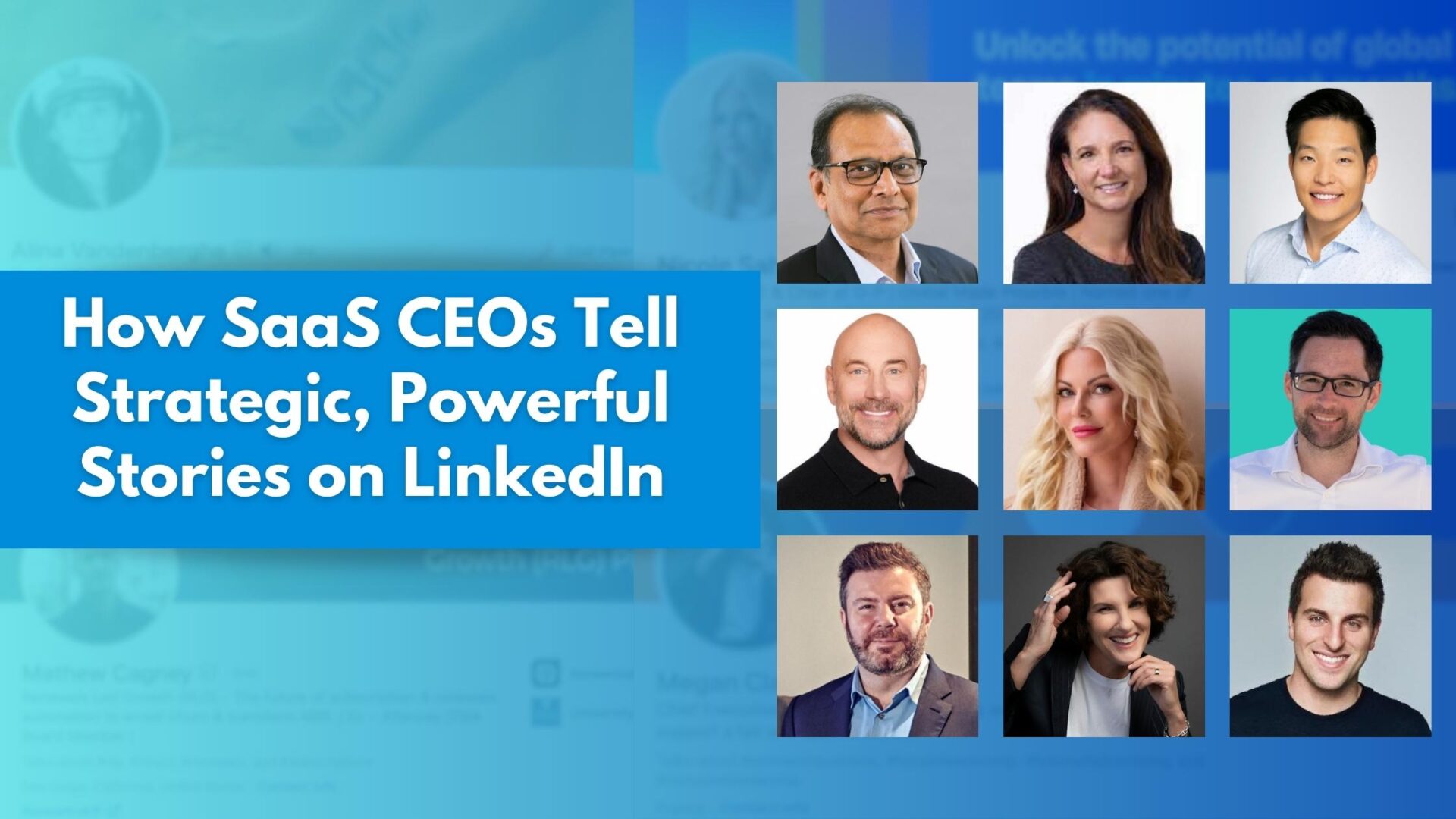For CEOs, storytelling has evolved from a buzzword to a business imperative, especially for small to mid-size, B2B SaaS companies. The narrative you weave isn’t just your company’s backstory; it’s the gravitational force that pulls others into your orbit.
I’ve written about the type of stories that SaaS CEOs should be telling — and why LinkedIn offers the ideal platform to share them.
But how, exactly, do you tell stories on LinkedIn? And how can you craft a narrative on LinkedIn that commands attention, captivates your stakeholders, and moves people to action?
Your Profile
The first place to tell stories on LinkedIn is on your profile. When you include stories here, everyone who visits your profile can read them, which is particularly valuable for your most important stories.
About: Use the About section to tell your founding story and your vision for the business. If you are hiring, tell the story of the opportunity and your culture. And no matter your current focus, talk to your most important group of stakeholders. What do they need to know about you?
Who’s Doing It Well?
Featured: This section offers the opportunity to link to sources that tell your story for you. This is a great place to share industry press articles about you, podcasts where you told stories about your business, or customer success stories.
Who’s Doing It Well?
Current Job Description: Don’t waste this space telling the exact same story that’s in your About section. Every CEO sees their job a little differently. How do you see your role?
Who’s Doing It Well?
Previous Job Descriptions: Use your prior jobs to tell the story of your career journey. How did each role in your journey prepare you for what you’re doing now?
Who’s Doing It Well?
Background Header: This banner spans the top of your profile and is the first thing people see — use it to visually tell people who you are. Do you have a photo of you at work, meeting with customers or with your team? Can you show your culture?
Who’s Doing It Well?
Headline: Located just below your profile photo, your headline serves as your business card — and your short-phrase elevator pitch. Include your title and company name, but make the most of this high-value space with a mini story — whom do you help, what problem do you solve, why should people talk to you?
Who’s Doing It Well?
You can incorporate mini stories into other sections of your profile as well. What can you include in any of these sections to help people understand who you are?
-
-
- Education
- Languages
- Volunteer
- Patents
- Honors and Awards
-
Your Posts
Each post you make offers an opportunity to reveal more about you, your vision, and your journey. Consider sharing these stories as you post:
Customer Stories: Share stories about the results customers achieve or how they used your solution to overcome obstacles. These mini case studies not only show how you help and value your customers, but they also encourage your team and invite potential customers to experience similar success.
Team Stories: You have an amazing team — share stories of their milestones, successes, and experiences.
FAQs: The questions you are frequently asked — and your answers to them — have value as stories on LinkedIn. They pre-emptively address and remove objections from prospects, build confidence in you and your team, and dismiss false assumptions or narratives.
Who’s Doing It Well?
Blogs
Longer articles on LinkedIn offer the ideal opportunity to share more complex stories: why you founded the company, influencers who have had a major impact on your life, what continues to motivate you, and what kind of company/culture you’re building.
Write about the problems you solve, why you have chosen to solve them the way you do, and how customers have achieved success. Demonstrate thought leadership in the industries you serve by addressing trends, issues, and current challenges.
Who’s Doing It Well?
Engagement
Liking, sharing, and commenting on others’ posts start conversations on LinkedIn. These conversations can grow beyond the internet and into real relationships.
When you comment on a post, go beyond the niceties (“Great post!” “Thanks for sharing this important news!”) to share your perspective.
Always be positive (even when you disagree), and offer a sentence or two from your story — what have you seen or experienced? Or ask a relevant question. Authentic engagement with another person’s story builds connection with them.
Who’s Doing It Well?
Elevate Your Storytelling
Storytelling in the digital age is more than a skill — it’s a leadership mandate, especially for CEOs of burgeoning SaaS companies.
Your story on LinkedIn should reflect a compelling journey that resonates and drives action. And remember, the digital landscape is ever-evolving — and so should your story. It’s not just about standing out today but adapting and staying relevant tomorrow.
Ready to take your storytelling to the next level? If you are too busy to tell stories consistently or feel like your storytelling could be better, our team can help. Reach out to me on LinkedIn or schedule a quick call.

